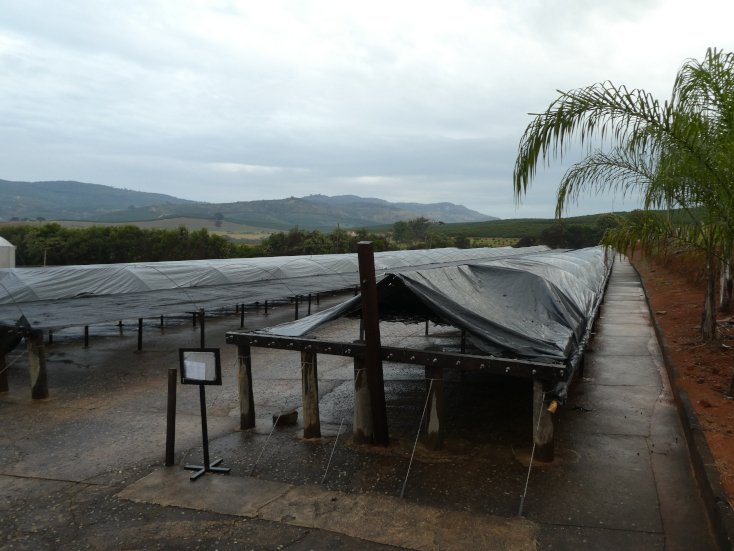Coffee Process
In providing our Blasus Welsh Roast coffee we utilise 3 beans, and here is a page describing the process these beans use.
Washed Process
Used in 2 of the beans for Blasus. The washed process is the most used process in coffee. Once the beans are picked, they are placed into a depulping machine within a wet mill. This machine is used to force the beans out of the cherry, which contains the mucilage, including the natural sugars that give coffee its natural sweetness. Once this is completed the coffee is placed within a fermentation tank for up to 24 hours depending on the environment, this will break down the mucilage leaving the parchment.
Once this is complete the coffee is ready to be washed. This will be done within clean tanks. Afterwards, they will feel gritty in the hands, this means they will are ready to be dried on drying tables and will sit to dry for up to 22 days. Being gently turned during this time.

African Drying Table
After they are sufficiently dried, they are ready to be packed and sent to our warehouse to be roasted, bagged and sold to customers, where you will enjoy a lovely cup of coffee from the Welsh coast.
Wet Hulled Process
This process is used only in Indonesia with its yearlong high humidity. This process is often confused with Washed, however, they are different once they are ready to dry. Wet Hulled Beans are only dried for 3 days maximum.
After they are partially dried. They are placed in a high-power huller designed for removing this parchment, however, this can cause the bean to split at the ends due to the low density the excess water leaves at this point.
Once the Hulling is complete, they are placed outside in the sun to dry, and left in bags stored inside overnight to continue fermentation. This will last up to 3 days, after which it is ready to export.